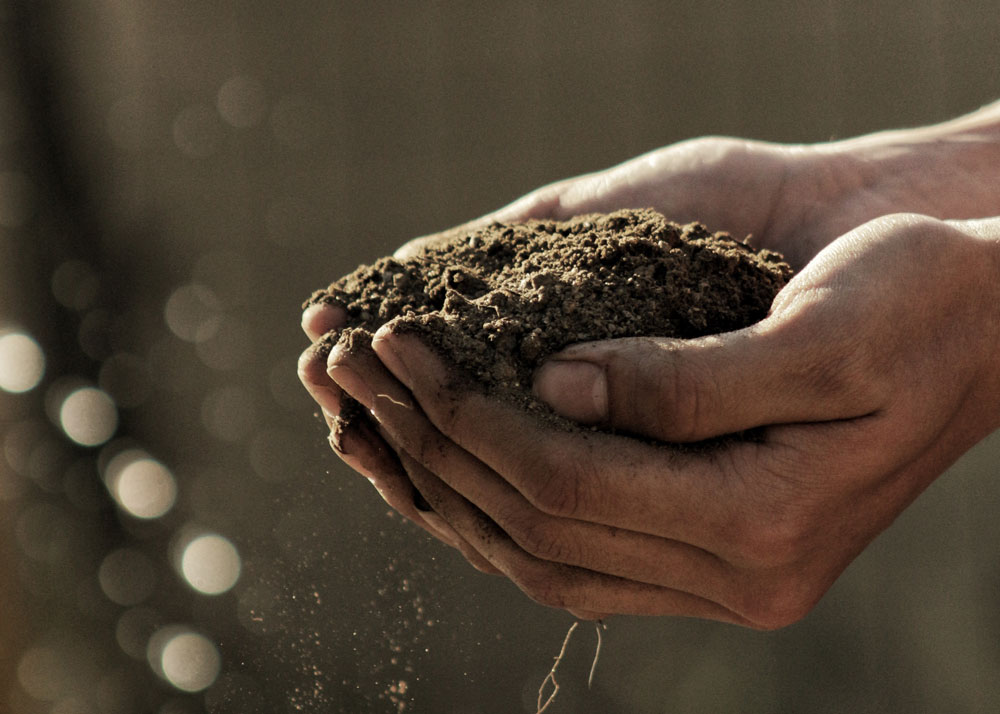
Photo: Perry Mastrovito (See more of this home here.)
Plants thrive in locations that are ideally suited for them. Though there are many species adaptable enough to take root anywhere, it’s a good idea to tailor your landscaping based not just on what you’d like to grow, but also on what grows best where you are.
There are two extremes to the soil spectrum: acidic and alkaline, with a wide range of variations between them. The amount of acidity or alkalinity is measured in pH units from 0 to 14, with acidic soils registering as a low number and alkaline as a high number.
Most plants do well in slightly acidic soil because that condition allows them to absorb nutrients more efficiently. Flowering plants, particularly hydrangeas, azaleas, gardenias and rhododendrons, love acidic soil. Trees like beech, willows and dogwood also prefer more acid in the earth, as do some produce, such as blueberries, potatoes and leafy lettuce.
For alkaline soil, it’s best to plant options like honeysuckle, clematis, morning glory and ivy, as well as edibles like Brussels sprouts, cantaloupe and cabbage.
You can change the pH level around certain plants, usually through the use of dolomitic limestone, which adds magnesium and calcium carbonate to the soil.
Beyond pH considerations, it’s also handy to understand common types of soil, since that helps you know what to plant and how much to water and fertilize. (For an overview of different soil types, see the sidebar, right.)
Altering your soil to suit your growing preferences isn’t hard; it just requires a little research, diligence and patience. Armed with these soil basics, your thumb will turn a vibrant shade of green before you know it.
See also: The Best Time to Prune Trees and Shrubs
Homegrown Soil Test

Photo : Gabriel Jimenez / Unsplash
How can you test your garden soil pH without buying a soil-test kit at your local hardware store? Turn to your kitchen pantry.
Collect soil from your garden and put two spoonfuls into separate containers. Add 1/2 cup of vinegar to one of the containers. If the soil fizzes, it’s alkaline with a pH greater than 7.
If the vinegar test doesn’t produce a reaction, add distilled water to the second container until the soil is slightly muddy, then add 1/2 cup of baking soda. If the baking soda fizzes, your soil is acidic, likely with a pH level between 4 and 6.
If your soil doesn’t react to either test, it’s neutral with a pH of 5.5 to 7. You have the perfect yard — ideal for growing just about anything!
See also: 6 Gorgeous Outdoor Kitchens
Soil Types + What to Plant
Clay

fotolia.com / Алексей Филатов
Properties: Seems thick, especially when wet. Forms easily into a solid ball when moistened. Clay is almost always highly alkaline.
Best plants: Hosta, iris (shown above), switch grass
Silty

fotolia.com / diyanadimitrova
Properties: Feels smooth, leaves dirt on the skin when you try to roll it in a ball. Tends to drain poorly and can become compacted easily. Has a low to neutral pH.
Best plants: Roses, ferns, daffodils (shown above)
Chalky

fotolia.com / Marek Walica
Properties: Recognizable for the whitish chunks in it caused by excess calcium carbonate or limestone. Very alkaline.
Best plants: Echinacea (shown above), chamomile, poppies
Sandy

fotolia.com / David
Properties: Feels gritty and dry; can’t be clumped together even when wet. Water drains quickly, so it’s good for plant roots, but needs extra nutrients. Typically acidic.
Best plants: Lavender, columbine (shown above), yarrow
Peat

fotolia.com / gratysanna
Properties: Easily compacted, especially when wet. Recognizable for its dark brown or black color, compared to the lighter color of sandy soil. Good for holding water
in dry conditions. Fairly acidic.
Best plants: Peat moss, witch hazel (shown above), heather
Loamy

fotolia.com / Dusan Kostic
Properties: Combination of clay, sand and silt. An ideal soil, because it has good drainage and retains nutrients. Usually has a neutral pH.
Best plants: Edibles like peppers, tomatoes (shown above), and cucumbers
See also: Edible Landscaping at Your Log Home










